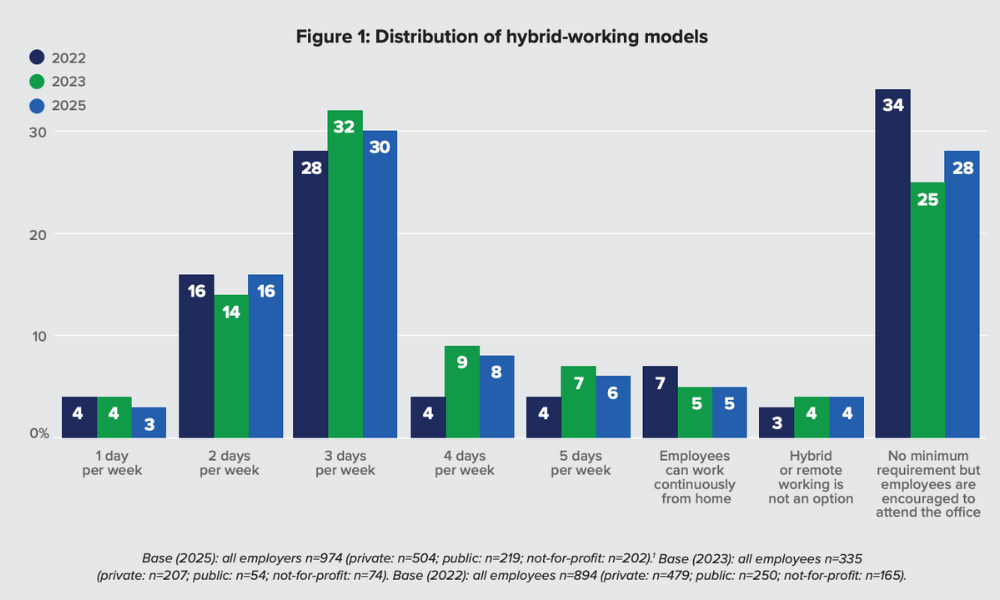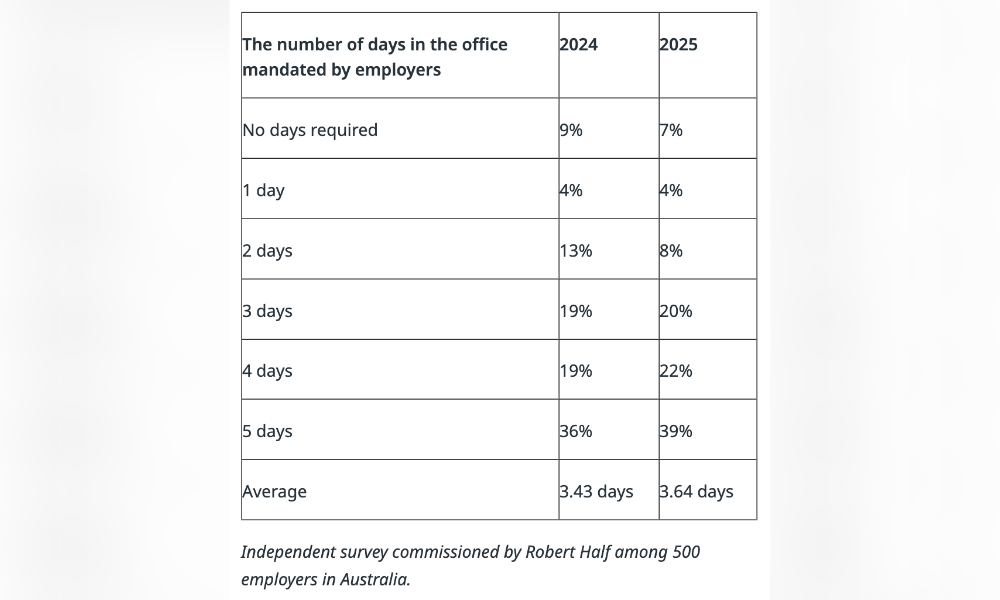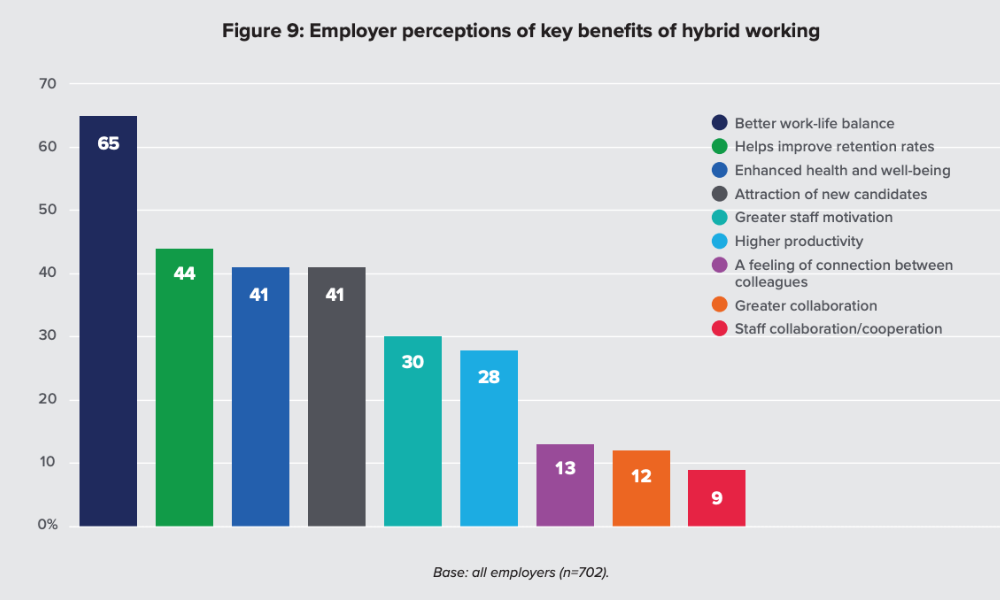
Fewer employers implementing three- to five-day onsite attendance

The implementation of hybrid work arrangements in Australia has entered a "stabilisation phase" despite recent reports of growing office-return mandates in workplaces.
A new report from the Australian HR Institute (AHRI) revealed that 44% of employers require their staff to be in the office three to five days a week, down from the 48% recorded in 2023.
It further found that 82% of employers also expect hybrid work to remain the same or increase over the next two years.
"Hybrid working arrangements in Australian workplaces have entered a stabilisation phase," said Sarah McCann-Bartlett, CEO of AHRI, in a statement.
In fact, the report found that mandating employees to be onsite three days a week remains the most dominant hybrid work arrangement among employers. Only six per cent of employers surveyed said they have ordered a full office return to employees.

Source: AHRI
The findings come despite major organisations, such as Amazon and Tabcorp, ordering their staff to fully return onsite this year.
"Despite widespread reports of an increase in office attendance mandates, the survey data showed that this hasn't been the case," McCann-Bartlett said. "Instead, Australian organisations are maintaining a balanced approach, with a three-day hybrid work arrangement remaining the dominant model."
It also comes amid recent findings from Robert Half that revealed a "domino effect" in office-return mandates as employers admit that they are significantly influenced by other businesses' policies.
In the Robert Half report, the five-day onsite mandate is the most implemented office-return policy, with 39% of workplaces adopting it. But on average, mandated in-office workdays total 3.64 per week.

McCann said it is up to each organisation to determine the work arrangement that will serve them the best.
"But they should consider the effects on their business," she warned.
The AHRI report revealed that 31% of employers who tightened their physical workplace attendance requirements reported negative impacts on recruitment and retention.
More than half (51%) of the respondents who said hiring became more difficult also noted the disproportionate impact of their tighter physical attendance requirements on certain workforce groups.
Groups that were negatively impacted were women and people with caring responsibilities, according to the respondents. Others said it also disproportionately affected people with health issues.
On the other hand, nearly half of employers said hybrid work has made their employees much more productive (11%) and more productive (34%). They also noted the other benefits of hybrid work, such as better work-life balance (65%) and improved retention rates (44%).
More than four in 10 respondents also said hybrid work enhanced health and wellbeing (41%) and attracted new candidates to their organisation (41%).

Source: AHRI
"With nearly half of employers reporting a productivity boost from hybrid work, it's clear that well-managed hybrid working can help ease recruitment difficulties and skills shortages," McCann-Bartlett said.
Outside of hybrid work, the report also found that 98% of organisations in Australia are offering some form of flexible work arrangement.
Part-time work is the most popular flexible work arrangement, with 92%. Other offered flexible work policies are:
Flexible start and finish times (90%)
Compressed hours or compressed work weeks (58%)
Career breaks or secondments (49%)
Flex-time (45%)
Job sharing (34%)
On-call working (16%)
Term-time working (8%)
"Employers who adopt a strategic approach to hybrid and flexible work, and who manage hybrid working effectively, will be well-positioned to attract and retain top talent in what remains a very competitive labour market," said McCann-Bartlett.
To successfully adopt hybrid work arrangements, the AHRI offered the following advice:
Ensure that any new or revised flexible work or hybrid work policy does not reduce the pool of available talent and will not have legal consequences.
Regular consultation with employees to ensure alignment with strategic business goals.
Employees should be given sufficient notice when switching to a different hybrid work arrangement.
Consider whether office design is suitable for hybrid work.
Provide incentives and host social events to engage employees.
Be more purposeful in prescribing when employees should be in the office.
Ensure commitment from the organisation's leadership and senior management.
Strengthen the skills of line managers to support hybrid work.
Prioritise employee health and safety, including ergonomic home workstation assessments.
For flexible work, the AHRI offered the following advice:
Be aware of potential risks of certain forms of flexible working, such as work intensification and potential restriction on job and pay progression opportunities.
Show a commitment to flexible work and ensure that the process is followed fairly.
Actively promote a full range of flexible work options available to support employees who cannot work from home.